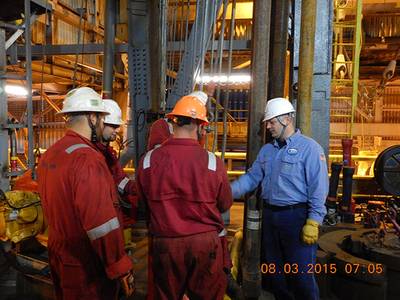Shell’s drilling operations in the Chukchi Sea are being overseen 24/7 by inspectors from the U.S. Bureau of Safety and Environmental Enforcement (BSEE) to ensure compliance with federal regulations and safety standards, BSEE said.
BSEE said its inspector boarded the semi-submersible drilling unit Transocean (RIG) Polar Pioneer before it began drilling the top section of the well at Burger J on July 30, and a second BSEE inspector is on board the drillship Noble Discoverer at Burger V, even though the Discoverer is not permitted to conduct drilling operations while the Polar Pioneer is operating.
Shell is required to maintain a minimum spacing of 15 miles between rigs to minimize the potential for impacts on walruses in the region, in accordance with a U.S. Fish and Wildlife Service Letter of Authorization (LOA) issued June 30, which also prohibits simultaneous drilling operations at the two approved locations.
Shell intends to drill at Burger J with the Polar Pioneer and Burger V with the Discoverer. The two well sites are approximately nine miles apart.
BSEE said its inspectors’ presence on both drilling units ensures federal oversight of conditions set forth in Shell’s Applications for Permit to Drill (APD) approved by BSEE July 22. These conditions include a restriction from drilling into oil-bearing zones until the capping stack is onsite and deployable within 24 hours.
On July 3, damage to the icebreaker M/V Fennica caused by striking an underwater object delayed the transport of the capping stack to the Chukchi Sea. M/V Fennica underwent repairs in Portland, Ore., in late July and is currently sailing to the Chukchi Sea with the capping stack on board.
If Shell is able to transport the capping stack to the Chukchi Sea, it may submit an Application for Permit to Modify the APDs and request to have this restriction reconsidered.











